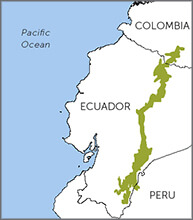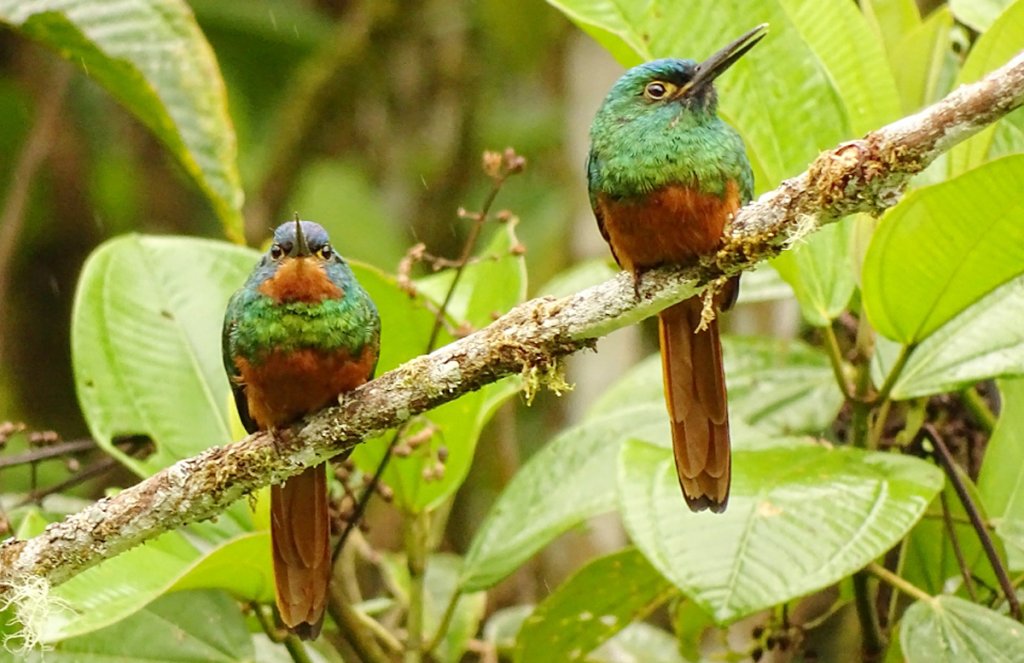 The eminent neotropical naturalist Alexander Skutch admired jacamars for the “metallic brilliance of plumage, richness and variety of color, abundant vitality, and gracefully dashing movements.” He likened jacamars to hummingbirds (such as the Marvelous Spatuletail), although the species are not related.
The eminent neotropical naturalist Alexander Skutch admired jacamars for the “metallic brilliance of plumage, richness and variety of color, abundant vitality, and gracefully dashing movements.” He likened jacamars to hummingbirds (such as the Marvelous Spatuletail), although the species are not related.
Habits of the Jacamar
Coppery-chested Jacamars are insectivores and take a variety of winged insects. Unlike most birds, they will eat stinging wasps and bees. It's thought that the jacamar's long bill is an adaptation that enables the bird to hold the wasp or bee away from its vulnerable face and eyes until the insect has been killed.
They are sit-and-wait hunters, sitting quietly on a favored perch, then dashing out to capture prey with an audible snap of the bill. Like kingfishers, jacamars nest in burrows dug into a river or road bank. Mated pairs take turns excavating the long, curved burrow with their bills and feet.
Sign up for ABC's eNews to learn how you can help protect birds
Both sexes incubate the eggs, which hatch after around three weeks. The chicks hatch already covered in down—an unusual feature for perching birds.
ABC partner Fundación Jocotoco protects this uncommon jacamar at Ecuador's Tapichalaca Reserve, an Alliance for Zero Extinction site for the Jocotoco Antpitta and other threatened species such as the Golden-plumed Parakeet. Nearby Podocarpus National Park is also a stronghold for the Coppery-chested Jacamar.
Find out more about visiting Tapichalaca on our Conservation Birding website.
Donate to support ABC's conservation mission!



















































